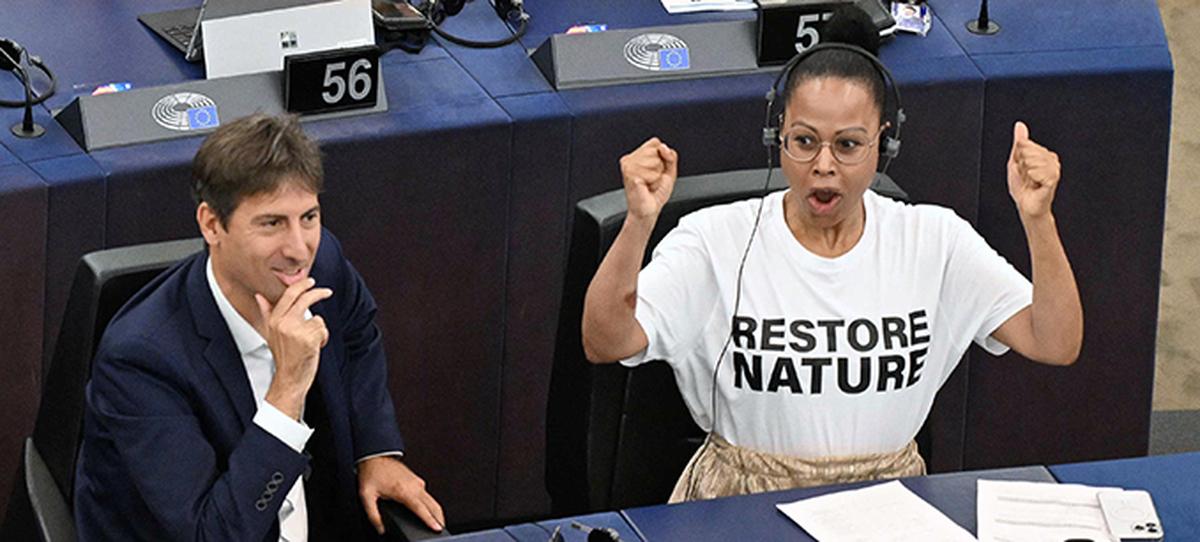The story so far: The European Union (EU) on June 17 approved its ambitious Nature Restoration Plan which aims to make continent-wide efforts to restore degraded ecosystems. It is a crucial part of the bloc’s 2030 biodiversity strategy which, in turn, forms a core area of the European Green Deal.
What does the new law entail?
The new law aims to restore ecosystems, including species and habitats that exist on EU’s land and in seas to:
-
enable the long-term and sustained recovery of biodiverse and resilient nature,
-
contribute to achieving the EU’s climate mitigation and climate adaptation objectives, and
-
meet international commitments.
According to the European Commission, 81% of habitats in the EU currently have a “poor” status, and one in three bee and butterfly species are in decline.
What are the targets to be met under the new law?
The primary target of the new legislation is long-term recovery of ecosystems. The measures should ideally cover at least 20% of the EU’s land and sea areas by 2030, and all ecosystems in need of restoration by 2050, the commission said. Priority should be given to areas under the Natura 2000 – a network of 27,000 natural sites protected by EU legislation.
The Restoration Law also has specific targets based on existing legislations, for urban, forest, marine, and agricultural ecosystems, for pollinating insects, and those related to river connectivity. Some of these are:
-
Reversing the decline of pollinator population by 2030
-
No net loss of green urban space and tree cover by 2030, and an increase in their area thereafter
-
Increasing stock of organic carbon
-
Restoring drained peatlands under agricultural use
-
Restoring the habitats of iconic marine species such as dolphins and porpoises, sharks and seabirds
-
Restoring at least 25,000 km of rivers to a free-flowing state by 2030
How will the law be implemented?
Countries in the EU bloc are expected to submit National Restoration Plans to the Commission within two years – by mid-2026 – specifying their plans to achieve the targets. Monitoring and reporting progress on these targets will be under the purview of the countries themselves. The European Environment Agency will prepare technical reports on this progress.
The European Commission will report to the European Parliament and the Council on the law’s implementation.
What is the cost of implementing the law?
According to a research paper published in December 2022 by authors Gabrielle Aubert of Institute for European Environmental Policy, and Hugh McDonald and Levin Scholl Ecologic Institute, the annual costs of restoring 30% of habitats listed under Habitats Directive by 2030 are estimated to be €8.2 billion (average annual costs over the 2022-2030 period). Habitats Directive is a part of EU’s 2030 biodiversity strategy on restoring degraded ecosystems.
The research, however, notes that this funding will not be enough as it does not account for marine and urban ecosystems, and habitat areas not covered by the Habitats Directive, which find mention in the restoration law.
What are the challenges?
As seen in other plans of ecological preservation across the world, securing funding is always a significant roadblock. (We are witnessing this with the discussions on climate finance and demands for loss and damage compensation). The European Greens, a transnational political party focused on pro-climate action and environmental conservation in Europe, also suffered heavy losses in the recently-concluded European Parliament elections, which will make the task tougher, going forward.

month
Please support quality journalism.
Please support quality journalism.

